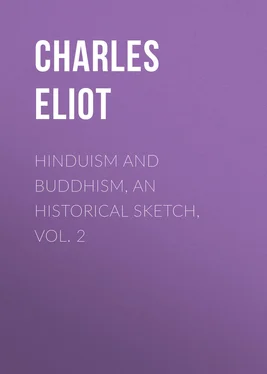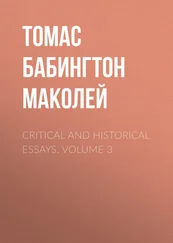Charles Eliot - Hinduism and Buddhism, An Historical Sketch, Vol. 2
Здесь есть возможность читать онлайн «Charles Eliot - Hinduism and Buddhism, An Historical Sketch, Vol. 2» — ознакомительный отрывок электронной книги совершенно бесплатно, а после прочтения отрывка купить полную версию. В некоторых случаях можно слушать аудио, скачать через торрент в формате fb2 и присутствует краткое содержание. Жанр: foreign_religion, Философия, Религиозная литература, foreign_psychology, foreign_antique, foreign_prose, на английском языке. Описание произведения, (предисловие) а так же отзывы посетителей доступны на портале библиотеки ЛибКат.
- Название:Hinduism and Buddhism, An Historical Sketch, Vol. 2
- Автор:
- Жанр:
- Год:неизвестен
- ISBN:нет данных
- Рейтинг книги:4 / 5. Голосов: 1
-
Избранное:Добавить в избранное
- Отзывы:
-
Ваша оценка:
- 80
- 1
- 2
- 3
- 4
- 5
Hinduism and Buddhism, An Historical Sketch, Vol. 2: краткое содержание, описание и аннотация
Предлагаем к чтению аннотацию, описание, краткое содержание или предисловие (зависит от того, что написал сам автор книги «Hinduism and Buddhism, An Historical Sketch, Vol. 2»). Если вы не нашли необходимую информацию о книге — напишите в комментариях, мы постараемся отыскать её.
Hinduism and Buddhism, An Historical Sketch, Vol. 2 — читать онлайн ознакомительный отрывок
Ниже представлен текст книги, разбитый по страницам. Система сохранения места последней прочитанной страницы, позволяет с удобством читать онлайн бесплатно книгу «Hinduism and Buddhism, An Historical Sketch, Vol. 2», без необходимости каждый раз заново искать на чём Вы остановились. Поставьте закладку, и сможете в любой момент перейти на страницу, на которой закончили чтение.
Интервал:
Закладка:
Throughout the middle ages the study of logic was pursued but Buddhists and Jains rather than by Brahmans. 240 240 For the history of logic in India, see Vidyâbhusana's interesting work Mediæval School of Indian Logic , 1909. But I cannot accept all his dates.
Vasubandhu composed some treatises dealing exclusively with logic but it was his disciple Diṅnâga who separated it definitely from philosophy and theology. As in idealist philosophy, so in pure logic there was a parallel movement in the Buddhist and Brahmanic schools, but if we may trust the statements of Vâcaspatimiśra (about 1100 A.D.) Diṅnâga interpreted the aphorisms of the Nyâya philosophy in a heterodox or Buddhist sense. This traces the beginnings of Indian logic to a Brahmanic source but subsequently it flourished greatly in the hands of Buddhists, especially Diṅnâga and Dharmakîrti. The former appears to have been a native of Conjevaram and a contemporary of Kâlidâsa. Both the logician and the poet were probably alive in the reign of Kumâragupta (413-455). Diṅnâga spent much time in Nâlanda, and though the Sanskrit originals of his works are lost the Tibetan translations 241 241 Diṅnâga's principal works are the Pramâṇa-samuccaya and the Nyâya-praveśa. Hsüan Chuang calls him Ch'en-na. See Watters, II. 209. See Stcherbatskoi in Muséon , 1904, pp. 129-171 for Diṅnâga's influence on the development of the Naiyâyika and Vaiśeshika schools.
are preserved.
The Buddhist schools of logic continued for many centuries. One flourished in Kashmir and another, founded by Candragomin, in Bengal. Both lasted almost until the Mohammedan conquest of the two countries.
From about 470 to 530 A.D. northern India groaned under the tyranny of the Huns. Their King Mihiragula is represented as a determined enemy of Buddhism and a systematic destroyer of monasteries. He is said to have been a worshipper of Śiva but his fury was probably inspired less by religious animosity than by love of pillage and slaughter.
About 530 A.D. he was defeated by a coalition of Indian princes and died ten years later amid storms and portents which were believed to signify the descent of his wicked soul into hell. It must have been about this time that Bodhidharma left India for he arrived in Canton about 520. According to the Chinese he was the son of a king of a country called Hsiang-Chih in southern India 242 242 His personal name is said to have been P'u-ti-to-lo and his surname Ch'a-ti-li. The latter is probably a corruption of Kshatriya. Hsiang-Chih possibly represents a name beginning with Gandha, but I can neither find nor suggest any identification.
and the twenty-eighth patriarch and he became an important figure in the religion and art of the Far East. But no allusion to him or to any of the Patriarchs after Vasubandhu has been found in Indian literature nor in the works of Hsüan Chuang and I-Ching. The inference is that he was of no importance in India and that his reputation in China was not great before the eighth century: also that the Chinese lists of patriarchs do not represent the traditions of northern India.
Religious feeling often ran high in southern India. Buddhists, Jains and Hindus engaged in violent disputes, and persecution was more frequent than in the north. It is easy to suppose that Bodhidharma being the head of some heretical sect had to fly and followed the example of many monks in going to China. But if so, no record of his school is forthcoming from his native land, though the possibility that he was more than an individual thinker and represented some movement unknown to us cannot be denied. We might suppose too that since Nâgârjuna and Âryadeva were southerners, their peculiar doctrines were coloured by Dravidian ideas. But our available documents indicate that the Buddhism of southern India was almost entirely Hinayanist, analogous to that of Ceylon and not very sympathetic to the Tamils.
The pilgrims Sung-Yün and Hui-Shêng 243 243 See B.E.F.E.O. 1903, pp. 379 ff.
visited Udyana and Gandhara during the time of the Hun domination (518-521). They found the king of the former a pious Buddhist but the latter was governed by an Ephthalite chieftain, perhaps Mihiragula himself, who was a worshipper of demons. Of the Yetha or Ephthalites they make the general observation that "their rules of politeness are very defective." But they also say that the population of Gandhara had a great respect for Buddhism and as they took back to China 170 volumes, "all standard works belonging to the Great Vehicle," the Ephthalite persecution cannot have destroyed the faith in north-western India. But the evil days of decay were beginning. Henceforward we have no more pictures of untroubled piety and prosperity. At best Buddhism receives royal patronage in company with other religions; sectarian conflicts increase and sometimes we hear of persecution. About 600 A.D. a king of Central Bengal named Saśâṅka who worshipped Śiva attempted to extirpate Buddhism in his dominions and destroyed the Bo tree at Bodh Gaya. 244 244 His evil deeds are several times mentioned by Hsüan Chuang. It required a miracle to restore the Bo tree.
On the other hand we hear of the pious Pûrṇavarman, king of Magadha, who made amends for these sacrileges, and of Śîlâditya, king of the country called Mo-lo-po by the Chinese, who was so careful of animal life, that he even strained the water drunk by his horses and elephants, lest they should consume minute insects.
We know more of Indian Buddhism in the seventh century than in the periods which precede or follow it. The epoch was marked by the reign of the great king, or rather emperor, Harsha-Vardhana (606-648 A.D.), and the works written by Bâṇa, Bhartrihari and others who frequented his court have come down to us. Also we are fortunate in possessing the copious narrative of Hsüan Chuang, the greatest of the Chinese pilgrims, who spent sixteen years (629-645) in India as well as the work known as the "Record of the Buddhist religion as practised in India and the Malay Archipelago," composed by I-Ching who travelled in those countries from 671 to 695. I-Ching also wrote the lives of sixty Chinese pilgrims who visited India during the seventh century and probably there were many others of whom we have no record.
The reign of Harsha is thus illustrated by a number of contemporary dateable works unusual in India. The king himself wrote some Buddhist hymns, 245 245 See Ettinghausen, Harshavardhana , Appendix III.
and three dramas are ascribed to him but were probably composed by some of the literary men whom he patronized. For all that, the religious ideas which they contain must have had his approval. The Ratnâvalî and Priyadarśikâ are secular pieces and so far as they have any religious atmosphere it is Brahmanic, but the Nàgânanda is a Buddhist religious drama which opens with an invocation of the Buddha and has a Jâtaka story for its plot. 246 246 The appearance of Gaurî as a dea ex machina at the end hardly shows that Harsha's Buddhism had a Śâktist tinge but it does show that Buddhists of that period turned naturally to Śivaite mythology.
Bâṇa was himself a devout Brahman but his historical romance Harshacarita and his novel called Kâdambarî both describe a mixture of religions founded on observation of contemporary life. In an interesting passage 247 247 Harshacarita, chap. VII. The parrots were expounding Vasubandhu's Abhidharma-kośa. Bâṇa frequently describes troops of holy men apparently living in harmony but including followers of most diverse sects. See Kâdambari, 193 and 394: Harshacar. 67.
he recounts the king's visit to a Buddhist ascetic. The influence of the holy man causes the more intelligent animals in his neighbourhood, such as parrots, to devote themselves to Buddhist lore, but he is surrounded by devotees of the most diverse sects, Jains, Bhâgavatas, Pâncarâtras, Lokâyatikas with followers of Kapila, Kaṇâda and many other teachers. Mayûra, another literary protégé of Harsha's, was like Bâna a Brahman, and Subandhu, who flourished a little before them, ignores Buddhism in his romance called Vâsavadattâ. But Bhartrihari, the still popular gnomic poet, was a Buddhist. It is true that he oscillated between the court and the cloister no less than seven times, but this vacillation seems to have been due to the weakness of the flesh, not to any change of convictions. For our purpose the gist of this literature is that Hinduism in many forms, some of them very unorthodox, was becoming the normal religion of India but that there were still many eminent Buddhists and that Buddhism had sufficient prestige to attract Harsha and sufficient life to respond to his patronage.
Интервал:
Закладка:
Похожие книги на «Hinduism and Buddhism, An Historical Sketch, Vol. 2»
Представляем Вашему вниманию похожие книги на «Hinduism and Buddhism, An Historical Sketch, Vol. 2» списком для выбора. Мы отобрали схожую по названию и смыслу литературу в надежде предоставить читателям больше вариантов отыскать новые, интересные, ещё непрочитанные произведения.
Обсуждение, отзывы о книге «Hinduism and Buddhism, An Historical Sketch, Vol. 2» и просто собственные мнения читателей. Оставьте ваши комментарии, напишите, что Вы думаете о произведении, его смысле или главных героях. Укажите что конкретно понравилось, а что нет, и почему Вы так считаете.












